History of Undersea Exploration - Materials Research Laboratory at
advertisement
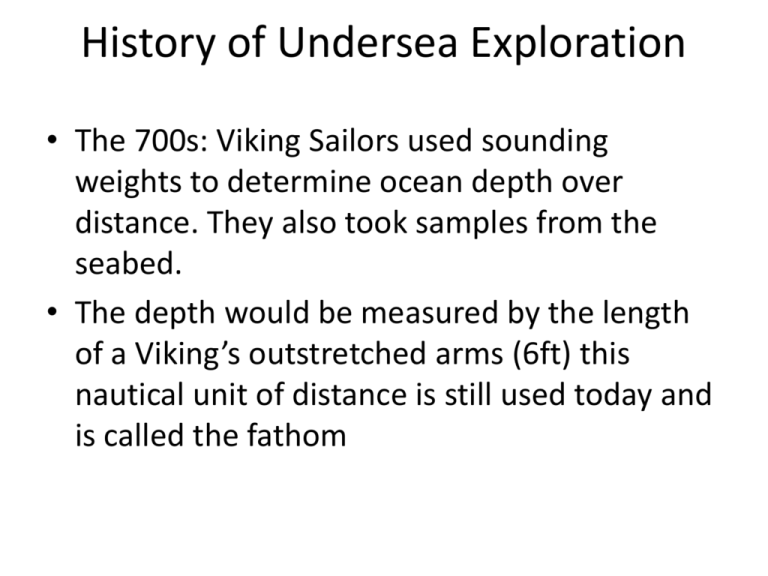
History of Undersea Exploration • The 700s: Viking Sailors used sounding weights to determine ocean depth over distance. They also took samples from the seabed. • The depth would be measured by the length of a Viking’s outstretched arms (6ft) this nautical unit of distance is still used today and is called the fathom History of Undersea Exploration • 1620: Cornelius Drebbel (Holland) is credited with the first submersible. • It was made of wood and bound in animal skin for water proofing. • He propelled it with oars on either side through sealed holes. • It reached a depth of 15ft. forum.spore.com History of Undersea Exploration • 1872-1876: The British sent the HMS Challenger on a 4 year expedition to explore the deep ocean. • They discovered over 4,000 new species of animals • Confirmed the general bathymetry of the sea floor to include features such as deep ocean basins. • They did this using sounding weights similar to the Vikings. • Today, SONAR is used to map bathymetry. HMS Challenger www.extremescience.com Route of HMS Challenger oceanexplorer.noaa.gov - History of Undersea Exploration • 1930s: William Beebe launches the Bathysphere. • Traveled to 3,000ft • The addition of a window made this the first time a marine biologist was able to observe marine life in its natural environment. Wikipedia.org History of Undersea Exploration • 1960: Jaques Piccard and Don Walsh are the first to travel to the deepest part of the ocean. • Located in the Mariana trench, the deepest point is called Challenger Deep over 6 miles down. • The submersible was called the Trieste and is of the original submersible designs. • It took them 5 hours to reach the bottom and they only spent 20 minutes there. • No footage of the bottom was recorded. Gasoline filled Lights Personnel Sphere Hnsa.org Trieste • The majority of the vessel was a series of floats filled with 85,000 liters (22,000 US gal) of gasoline. • Water ballast tanks were included at either end of the vessel, as well as releasable iron ballast fore and aft of the crew sphere. • What function do you think the gasoline served? • Why would they need a releasable iron ballast? Modern Undersea exploration • 1964: ALVIN is built and has since made over 4400 dives. • Since the Trieste, ALVIN and similar HOVs have returned to the Mariana Trench and made amazing discoveries. • Other submersibles used include: ROVs, AUVs, Towed vehicles and HROVs. Each has its limitations and benefits over another. Whoi.edu A race to the bottom • http://www.youtube.com/watch?v=0mBG0Lb Aoqk&feature=player_embedded • http://www.virginoceanic.com/vehicles/subm ersible/ Building the technology • What variables must engineers consider when designing and building the underwater craft? • Pressure • Buoyancy • Data collection equipment: Filming, lighting, instrumentation, windows. • Fitting inside James Cameron’s Deepsea Challenger • Designers James Cameron and Ron Allum envisioned DEEPSEA CHALLENGER as a sleek underwater rocket ship to dive fast and ascend faster, allowing for more time to explore the deep seafloor. • Nationalgeographic.com CAMERON’S CHAMBER • The 43-inch-wide pilot’s sphere, made of 2.5-inchthick steel, was built to fit Cameron’s lanky six-foottwo-inch frame. • Inside: oxygen tanks, thruster joysticks, a touch screen, an optical acrylic viewport (window), and three video monitors Nationalgeographic.com Pressure • Pressure in the deep sea can be as high as 16,000 psi. • This is like having 3 cars crushing each finger! • Many materials can withstand this pressure. • But the requirements of a submersible makes it difficult to use many of them. • It must have a small window and house a chamber that can fit a human and lots of equipment. Pressure • What about the hull (pressure chamber)? • Materials: Steel, Titanium, Pyrex, Ceramic? • Research has been done on the effectiveness of a ceramic vessel with a glass dome at one end and of a vessel made of one continuous piece of glass. • Steel is what has been used most recently by James Cameron. • The Nereus ROV is a titanium/ ceramic hybrid. Buoyancy • What’s The problem with steel? • When the weight of the hull, equipment, pilots, batteries, instruments all adds up, the sub weighs in the tons. • With out buoyancy assistance, the sub would sink rapidly and be difficult to control. • What design considerations must there be to ensure buoyancy assistance ? • http://www.hnsa.org/ships/trieste.htm Buoyancy • SYNTACTIC FOAM The sub’s beam is made of a specialized foam developed by Australian engineer Ron Allum. • Formed by suspending hollow glass microspheres in an epoxy resin, the flotation material is designed to survive the intense pressure of the Mariana Trench, which compressed the 24foot beam about two inches during the descent. Buoyancy • So once the sub can float, how do the pilots control its location in the water column? • The Trieste used steel shot to weigh down the sub. • Held on by an electromagnet for quick release, to make it float up higher. • There were also gas filled compartments to control buoyancy by releasing a little gas as the sub descends.
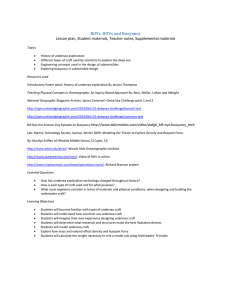
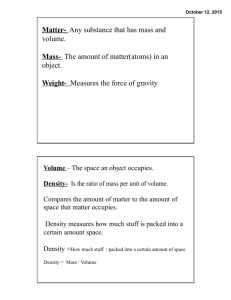
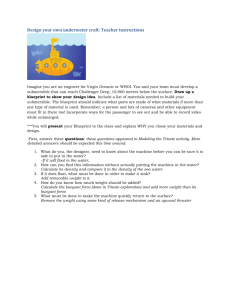

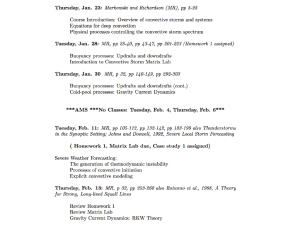
![locandina dottorandi [modalità compatibilità]](http://s2.studylib.net/store/data/005259821_1-9e349e4e3bf89f1cc48d1fe5ca196528-300x300.png)


